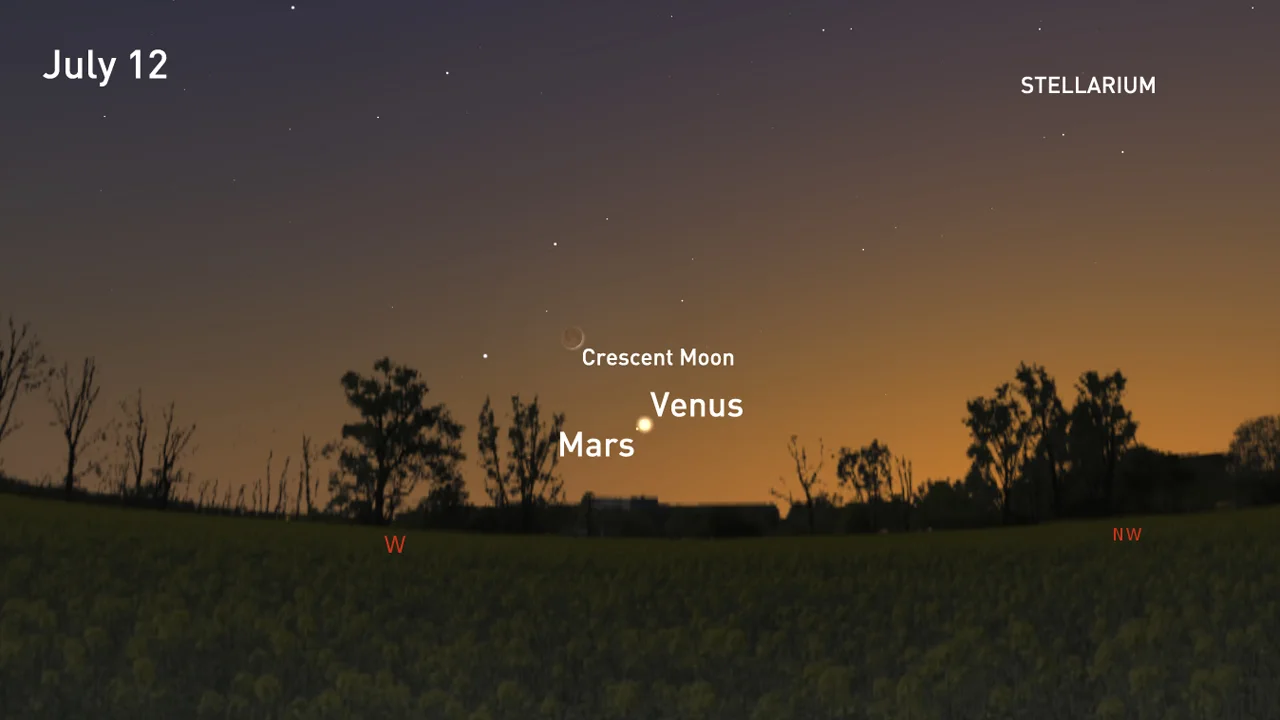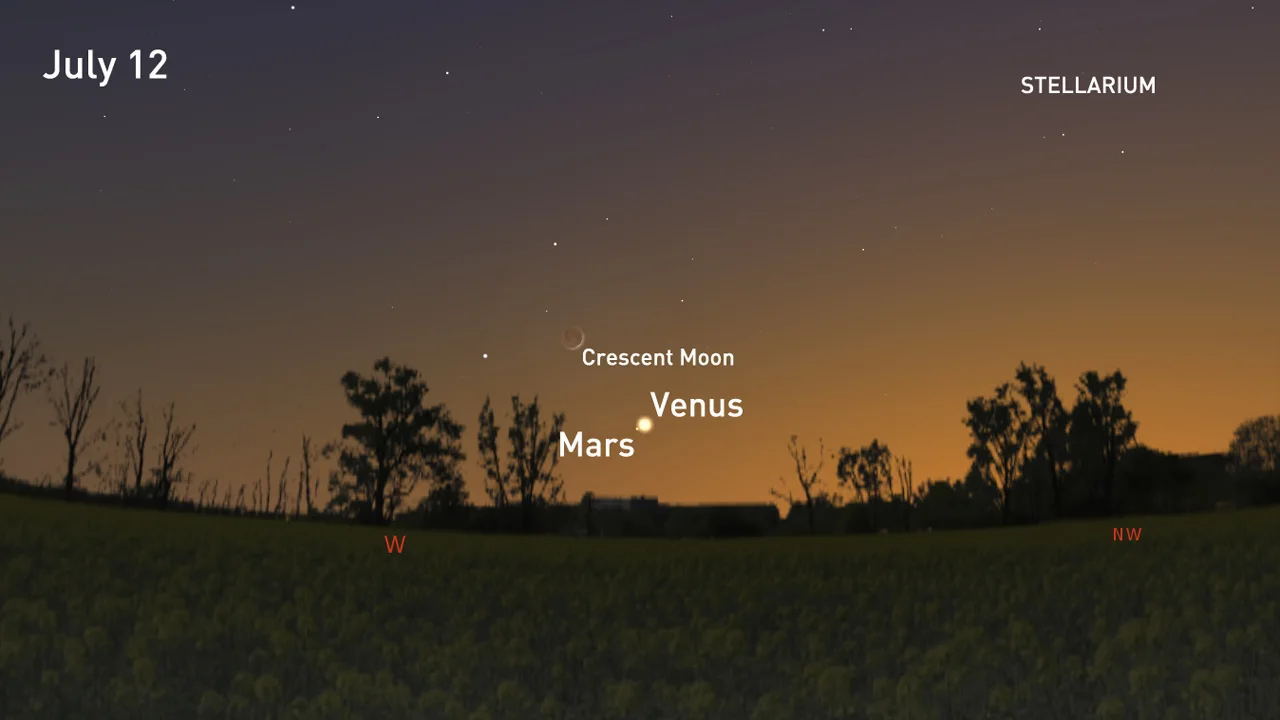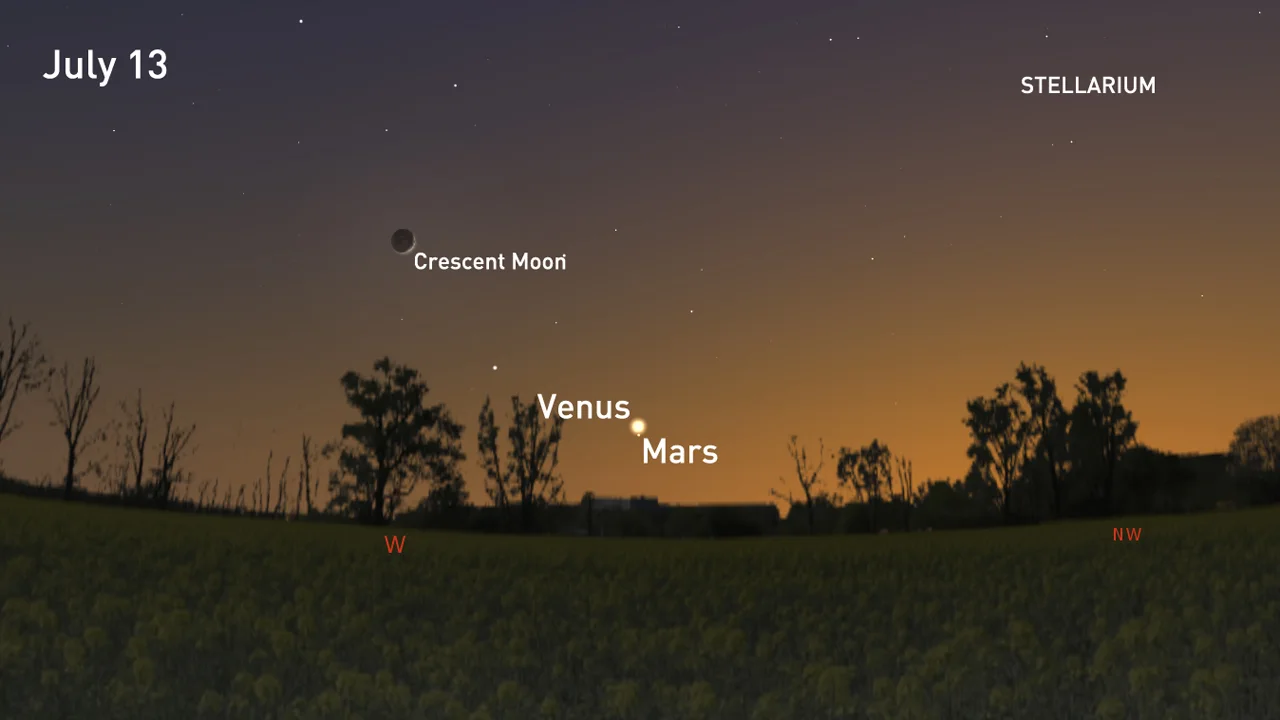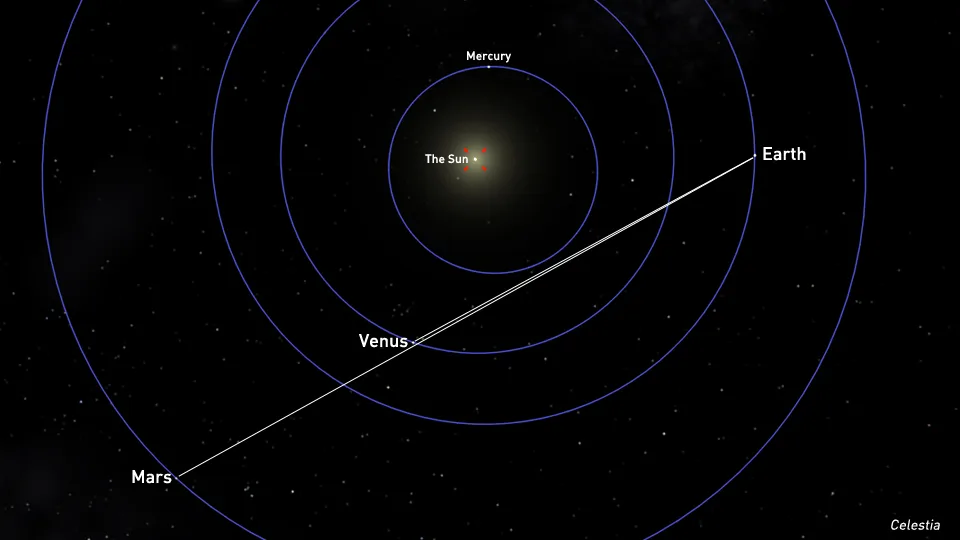
Look west! Venus and Mars team up in a 'close conjunction' after sunset tonight
Eyes to the sky on Monday and Tuesday night to see the 'Evening Star' and the 'Red Planet' as close as they're going to get for all of this year.
Check your cloud forecast, because if your skies are clear early this week, you can see the planets Venus and Mars as close together as they're going to get for all of 2021.
There are plenty of events to check out in the night sky throughout the year. Seeing the planets of our solar system 'team up' is probably one of the most fascinating. On the nights of July 12-13 of this year, two of the nearest planets to Earth will be extremely close together in the western sky, just after sunset.

The view of the western horizon, just after sunset, on July 12, 2021. Credit: Stellarium/Scott Sutherland
According to NASA, during this 'close conjunction' on Monday night, Venus and Mars will appear just one half of a degree apart from one another. That's roughly the width of an index finger, held out at arm's length.
The two planets will be roughly the same distance apart from one another on the night of July 13, as well.

The western horizon, at the same time, on July 13, 2021. Credit: Stellarium/Scott Sutherland
Related: Here are the top sights to see in the night sky for Summer 2021
Of course, Venus and Mars are not anywhere near each other, in the grand view of the solar system.
Currently, Venus is 214 million kilometres from Earth. Mars is farther, at over 371 million kilometres away. That puts Venus and Mars 157 million kilometres apart from one another in space. That's a little more than the average distance between the Earth and the Sun (1 astronomical unit or 150 million km)!
It's their relative positions in the solar system, as viewed from Earth, that makes them appear so close together in our sky.

This overhead view of the inner solar system shows the locations of the planets on July 12, 2021. Venus and Mars are over an astronomical unit away from each other, but the two lines joining the planets to Earth reveal how they look so close together from our perspective. Credit: Celestia/Scott Sutherland
These two planets won't get this close together again for some time, but you can see them in the sky together early in 2022. Starting in February, they appear in the morning sky, just before sunrise, near the eastern horizon. Towards late March, Saturn joins them, as well, forming a very close conjunction with Mars in early April.






